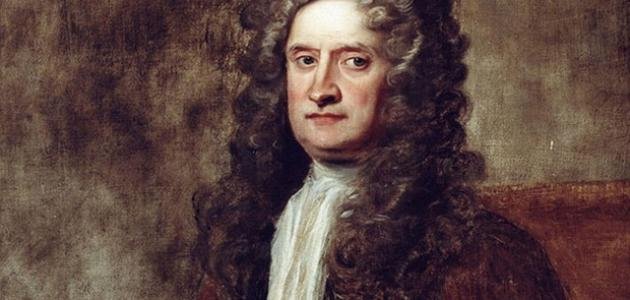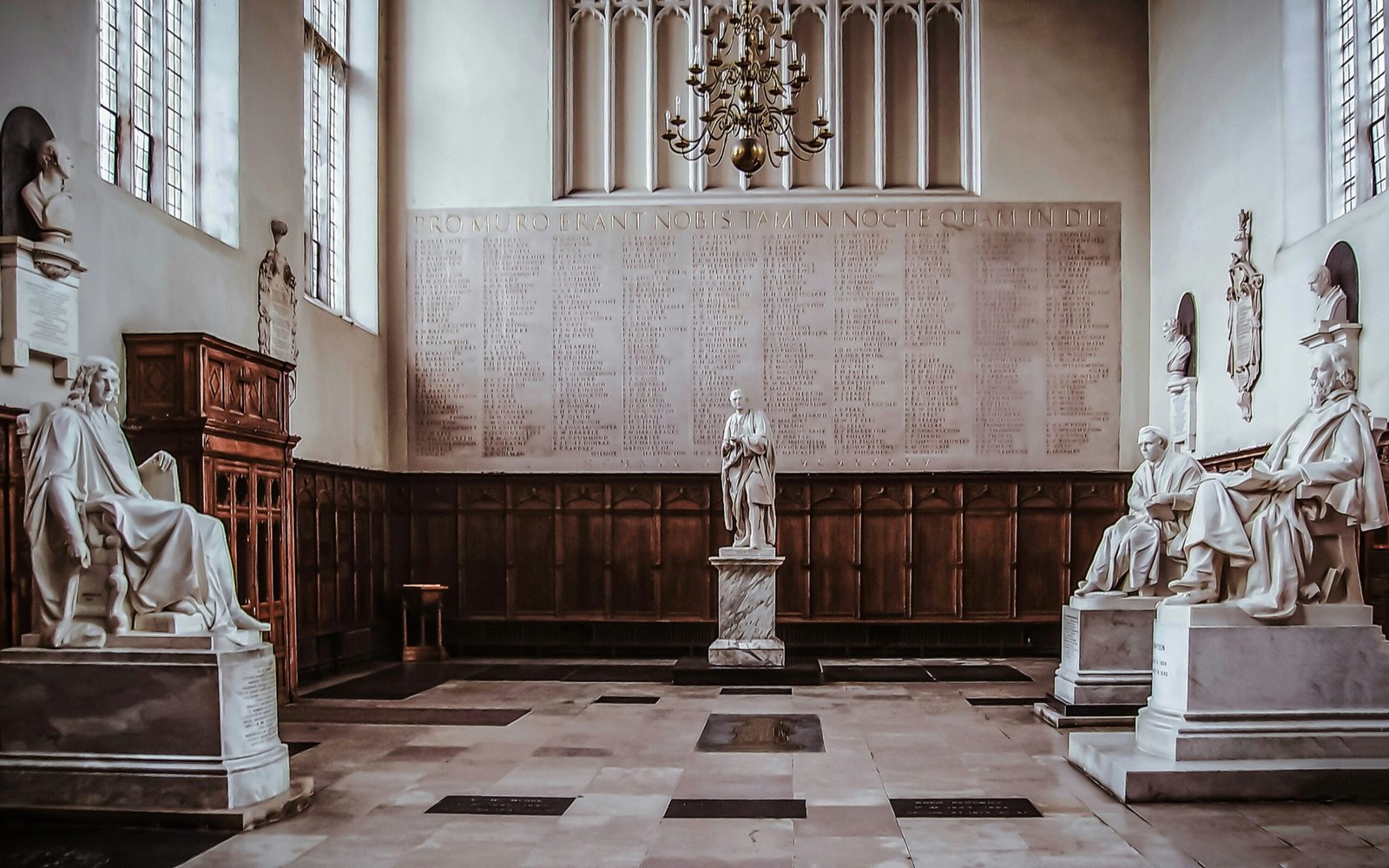Sir Isaac Newton, often referred to as the father of modern physics, was a renowned mathematician, physicist, and astronomer. His groundbreaking discoveries and theories revolutionized the scientific world and laid the foundation for many of the principles we still rely on today.
Early Life and Education
Isaac Newton was born on January 4, 1643, in Woolsthorpe, Lincolnshire, England. He grew up in a farming family but displayed exceptional intellectual abilities from a young age. Newton attended the University of Cambridge, where he studied mathematics, physics, and astronomy.
Laws of Motion
One of Newton’s most significant contributions to science is his formulation of the three laws of motion. These laws, known as Newton’s Laws, provide the foundation for understanding the behavior of objects in motion.
The first law, often referred to as the law of inertia, states that an object at rest will stay at rest, and an object in motion will stay in motion unless acted upon by an external force. The second law states that the force acting on an object is equal to its mass multiplied by its acceleration. The third law states that for every action, there is an equal and opposite reaction.
Universal Gravitation
Newton’s law of universal gravitation is another groundbreaking concept that revolutionized our understanding of the physical world. This law states that every particle in the universe attracts every other particle with a force that is directly proportional to the product of their masses and inversely proportional to the square of the distance between them.
Newton’s law of universal gravitation not only explained why objects fall to the ground but also provided a mathematical framework for understanding the motion of celestial bodies. This laid the groundwork for the development of the field of astrophysics.
Optics
In addition to his work in physics and mathematics, Newton also made significant contributions to the field of optics. He conducted experiments with light and developed the theory of color. His most famous experiment involved passing a beam of sunlight through a prism, which resulted in the separation of white light into its component colors.
Newton’s work on optics led to the development of the reflecting telescope, which revolutionized astronomy by providing clearer and more detailed observations of celestial bodies.
Legacy and Impact
Newton’s contributions to science and mathematics are immeasurable. His laws of motion and law of universal gravitation form the basis of classical physics and are still taught in schools and universities worldwide. His work laid the groundwork for the development of modern physics and influenced generations of scientists.
Newton’s ideas and theories also had a profound impact on other fields, such as engineering, astronomy, and even philosophy. His scientific method, which emphasized observation, experimentation, and mathematical analysis, became the standard approach to scientific inquiry.
Conclusion
Sir Isaac Newton’s legacy as a scientist and mathematician is unparalleled. His groundbreaking discoveries and theories continue to shape our understanding of the physical world. From his laws of motion to his theory of universal gravitation, Newton’s contributions have had a lasting impact on science and continue to inspire new generations of researchers and scholars.

السير إسحاق نيوتن (بالإنجليزية: Isaac Newton) (25 ديسمبر 1642 – 20 مارس 1727) عالم إنجليزي يعد من أبرز العلماء مساهمة في الفيزياء والرياضيات عبر العصور وأحد رموز الثورة العلمية. شغل نيوتن منصب رئيس الجمعية الملكية، كما كان عضوًا في البرلمان الإنجليزي، إضافة إلى توليه رئاسة دار سك العملة الملكية، وزمالته لكلية الثالوث في كامبريدج وهو ثاني أستاذ لوكاسي للرياضيات في جامعة كامبريدج. أسس كتابه الأصول الرياضية للفلسفة الطبيعية، وربما كان هذا أهم عمل فردي يُنشر على الإطلاق في العلوم الطبيعية[22] الذي نشر لأول مرة عام 1687، لمعظم مبادئ الميكانيكا الكلاسيكية. كما قدم نيوتن أيضًا مساهمات هامة في مجال البصريات، وشارك غوتفريد لايبنتز .
ولد إسحاق نيوتن في 25 ديسمبر 1642 (وفق التقويم اليولياني المعمول به في إنجلترا في ذلك الوقت، الموافق 4 يناير 1643 وفق التقويم الحديث).[2] في مزرعة وولسثورب في وولسثورب-كلوستروورث، في مقاطعة لينكونشير، بعد وفاة والده بثلاثة أشهر، الذي كان يعمل مزارعًا واسمه أيضًا إسحاق نيوتن. جاء والدته المخاض وولدت ابنها بعد ساعة أو ساعتين من منتصف الليل وكان القمر في تلك الليلة بدرًا، ونظرًا لولادته مبكرًا فقد كان طفلاً ضئيل الحجم حتى أن امرأتان كانتا تعتنيان بأمه أُرسلتا لجلب الدواء من الجوار ولكنهما بدلاً من أن تسرعا في جلب ذلك الدواء قررتا أن تستريحا في الطريق ظنًا منهما أن الطفل المولود ربما قد فارق الحياة بسبب حجمه.[24] وقد وصفته أمه حنا إيسكوف بأنه يمكن وضعه في الكوارت. وعندما بلغ الثالثة من عمره، تزوجت أمه وانتقلت للعيش في منزل زوجها الجديد، تاركةً ابنها في رعاية جدتهِ لأمهِ والتي كانت تدعى مارغريت آيسكوف.[25] لم يحب إسحاق زوج أمه، بل كان يشعر بمشاعر عدائية اتجاه أمه لزواجها منه.[26]
من عمر الثانية عشر إلى السابعة عشر، التحق نيوتن بمدرسة الملك في جرانتهام، وقد ترك نيوتن المدرسة في أكتوبر 1659، ليعود إلى مزرعة وولسثورب، حيث وجد أمه قد ترملت من جديد، ووجدها قد خططت لجعله مزارعًا كأبيه، إلا أنه كان يكره الزراعة.[27] أقنع هنري ستوكس أحد المعلمين في مدرسة الملك أمه بإعادته للمدرسة، فاستطاع بذلك نيوتن أن يكمل تعليمه. وبدافع الانتقام من الطلاب المشاغبين، استطاع نيوتن أن يثبت أنه الطالب الأفضل في المدرسة.[28] اعتبر سيمون بارون-كوهين عالم النفس في كامبريدج ذلك دليلاً على إصابة نيوتن بمتلازمة أسبرجر.[29]

في يونيو 1661، تم قبوله في كلية الثالوث بكامبريدج كطالب عامل،[30] وهو نظام كان شائعًا حينها يتضمن دفع الطالب لمصاريف أقل من أقرانه على أن يقوم بأعمال مقابل ذلك. في ذلك الوقت، استندت تعاليم الكلية على تعاليم أرسطو، التي أكملها نيوتن بتعاليم الفلاسفة الحديثين كرينيه ديكارت، وعلماء الفلك أمثال نيكولاس كوبرنيكوس وجاليليو جاليلي ويوهانس كيبلر. في عام 1665، اكتشف نيوتن نظرية ذات الحدين العامة، وبدأ في تطوير نظرية رياضية أخرى أصبحت في وقت لاحق حساب التفاضل والتكامل. وبعد فترة وجيزة، حصل نيوتن على درجته العلمية في أغسطس 1665، ثم أغلقت الجامعة كإجراء احترازي مؤقت ضد الطاعون العظيم. على الرغم من عدم وجوده في كامبريدج،[31] شهدت دراسات نيوتن الخاصة في منزله في وولسثورب في العامين اللاحقين تطوير نظرياته في حساب التفاضل والتكامل[32] والبصريات وقانون الجاذبية. وفي عام 1667، عاد إلى كامبردج وزامل كلية الثالوث. وكانت زمالة الكلية تتطلب أن يترسم طالبو الزمالة ككهنة، وهو ما كان نيوتن يرجو تجنبه لعدم اتفاق ذلك مع آرائه الدينية. ولحسن حظ نيوتن، لم يكن هناك موعد نهائي محدد لأداء ذلك، ويمكن تأجيل الأمر إلى أجل غير مسمى. ثم أصبحت المشكلة أكثر حدة في وقت لاحق عندما انتخب نيوتن لوظيفة أستاذ لوكاسي للرياضيات المرموقة. فكان لابد له من الرسامة ليحصل على تلك الوظيفة، إلا أنه تمكن من الحصول على إذن خاص من تشارلز الثاني ملك إنجلترا لاستثنائه
Newton’s Discovery-Sir Isaac Newton
